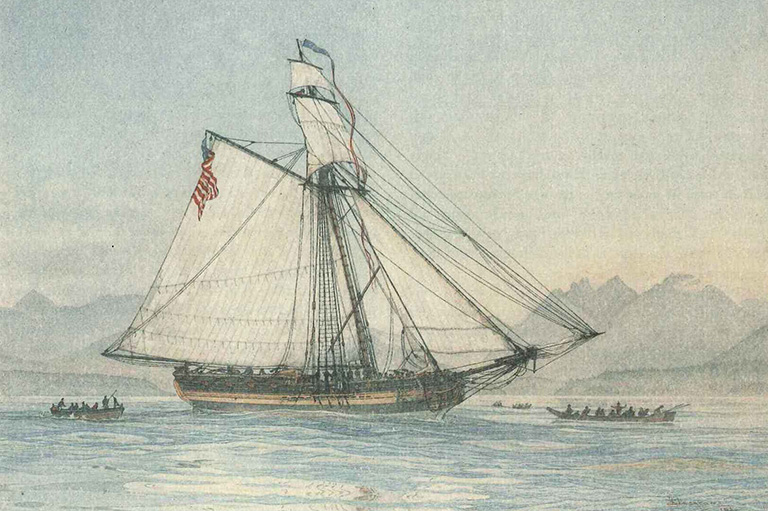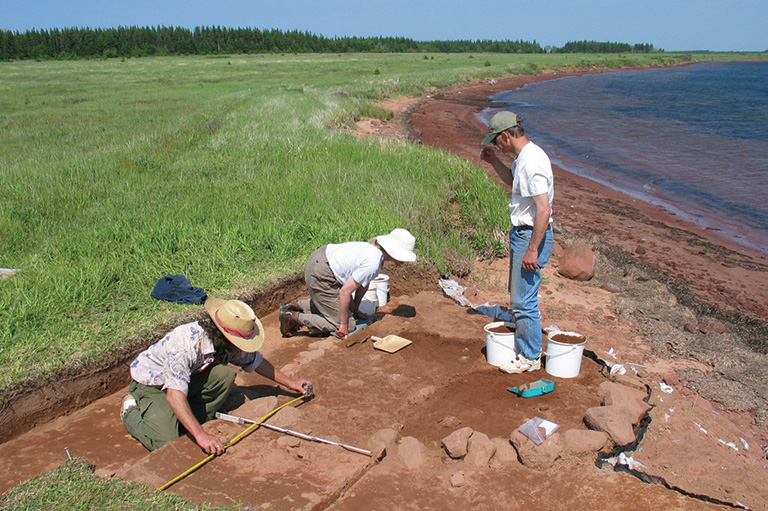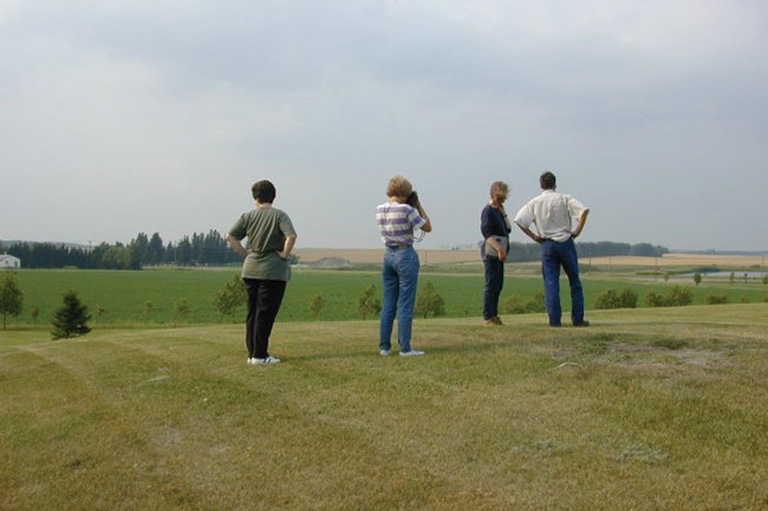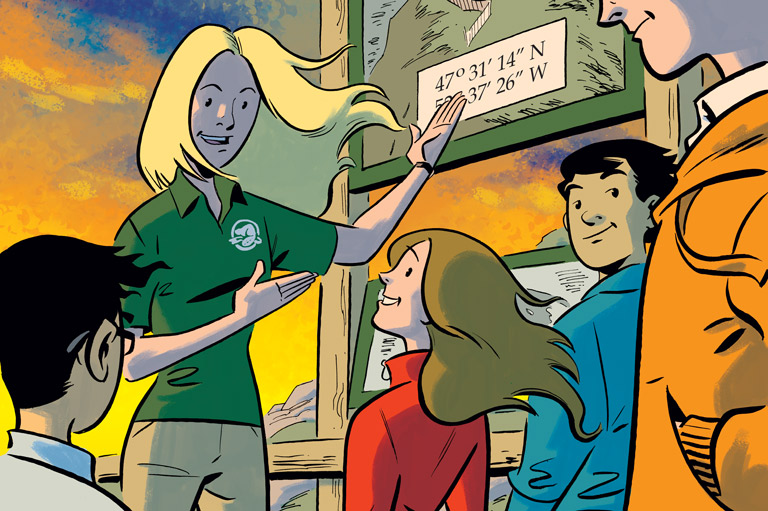Parks Canada Finds Sunken Treasures

For two weeks in June, a Parks Canada underwater archaeology team searched for the remains of three historic shipwrecks in waters in the Gwaii Haanas region of British Columbia. The four researchers scoured the water with sonar and when they got a hit, they dove into the water to search for signs of the Ino, the Resolution, and the Georgiana.
In 1794 — during the early days of the maritime fur trade — the Ino stopped near Kunghit Island, B.C, to trade, but Haida warriors overtook the ship and killed all aboard, except one man who climbed the rigging. Haida also captured the schooner Resolution in 1794. It was taken at Cumshewa Inlet, B.C., and only one crewmember survived.
In 1851, the British sloop Georgiana foundered near the same inlet. Its passengers were captured by Haida and held for ransom for nearly two months until a private American ship came to their rescue.
The Parks Canada team was looking for these ships and newer shipwrecks to help create a baseline inventory of these underwater cultural sites.
Challenges of the search
The researchers used remote sensing, side-scan sonars, magnetometers and an underwater vehicle to search the Gwaii Haanas National Conservation Area Reserve, but weren’t surprised that they didn’t find signs of these ships.
“We don’t always have an ‘x marks the spot’ historical record of where these vessels were wrecked so we have to search larger areas than what the actual wreck footprint would be,” said Jonathan Moore, the lead archaeologist in this search.
“In this environment it’s challenging to find wrecks for a number or reasons; one is the exposed shoreline, often rocky and not really conducive to shipwreck preservation.”
Moore said the wrecks of the wooden ships could have hit the rocky shoreline and broken up into pieces. “There would not be a huge amount of these vessels so what we’re looking for is a fraction of any given vessel.” Sometimes those fractions are buried by vegetation, which makes it more difficult for the team to find.
How to identify a ship from wreckage
If the members of the Parks Canada archaeological team found wreckage, they could identify the ship by studying everything from the technology on board to the construction.
“On, for instance, a late eighteenth-century wreck which is going to be a sailing vessel, you’re going to have a different set of technologies on board than say a vessel from one hundred years later,” said Moore. Underwater archaeologists such as Moore can tell which ship it was based on the fasteners, hull protection, and deck machinery.
“You can do all kinds of analysis of the wood species that the vessel is made of, which can tell you about the origin of that vessel and where it was built,” said Moore. “It’s a bit of detective work but it’s often fairly straightforward.”

Beyond shipwrecks
Although the underwater archaeological team was focused on looking for shipwrecks, it was also looking for signs of the ghost towns, industrial sites, mines, wharves, and other submerged sites. “There’s a range of historic sites which may have underwater components to them. For example, a mine site might have a wharf to get the ore out for processing and later to market,” said Moore.
The team did find remains of industrial activity in the Gwaii Haanas area, such as a wharve and piers. Now, the team is trying to link structures on the shore with the underwater remains.
“We’ve got an extensive inventory of terrestrial and intertidal sites and we’re building on the underwater component of the inventory. By inventorying sites, by looking for them, exploring them, we can better present and protect them.”
Though this was the first concentrated effort to find shipwrecks in the Gwaii Haanas region, Moore said the trip covered only a small area of the 3,400 square kilometres of the conservation area.
“There’s a rich, rich archaeological heritage here in Gwaii Haanas,” said Moore. “That’s a really interesting part of the story of the archaeological story of Gwaii Haanas — the submerged landscape story.”
Themes associated with this article
Advertisement




